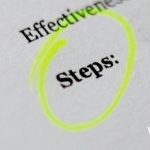You have searched high and low for the perfect job opening. Finally, you spotted an opportunity that you cannot afford to miss. Armed with the experience and academic qualifications, you meet all the requirements. Plus, the career trajectory appeals to your professional goals.
However, before entering into the practice, or even before you nail the interview, there are several application processes you would have to go through. One of these is the submission of a resume and cover letter.
A representation of professionalism and an indicator of excellent communication skills, these application documents are the first point of reference for evaluating your suitability.
Yet, despite their significance, many miss out on minor errors. These can make all the difference between receiving a rejection or a job offer.
What is the difference between proofreading and editing?

Proofreading before submitting the necessary documents for a new position aids in your job search success. However, it is essential not to confuse it with editing.
Editing is done immediately on your first draft, where changes are made to the content, structure, style, and clarity. Following a resume and cover letter format, and going through checklists on what to write can help you speed up the process.
From tailoring your resume to identifying issues with readability, editing is the precursor of proofreading.
How is proofreading done?
Proofreading is a process where you merely spot errors that may have gone unnoticed. As you look out for the specific details, you may have overlooked these mistakes when editing. Proofreading offers you a chance to correct them.
Resume & cover letter proofreading checklist
Though a tedious process, effective proofreading demonstrates effort put into the application to secure the job. There are common mistakes to look out for to ensure that your cover letter and resume are error-free.
1. Word choice, spelling & punctuation errors
Use words you are familiar with, or at least, well understood by the layman. Also, avoid exclamation marks and utilise periods to form concise sentences that portray professionalism. Remember to turn on the spell check function as a safety measure.
2. Grammar mistakes
Maintain consistent verb tenses and capitalisation.
3. Misuse of contractions & homophones
Look out for mix-ups of words that sound similar such as “accept” and “except”, and contractions like “its” and “it’s”. These have different definitions that could alter the meaning of the text.
4. Inaccurate details
Fact check to ensure all information is correct — double-check all personal information, dates, and abbreviations.
5. Poor formatting
Determining the best formats should have been part of the drafting and editing process. Proofread to make sure fonts, spacing, and alignment are consistent
The brain is programmed to decipher words, even when they are jumbled. Therefore, it is recommended to proofread a few times, at least twice. A couple more times would suffice too. A quick tip — split it up and focus on one of the above tasks on each round.
What are the effective ways of proofreading?
1. Proofread a hard copy
For a more thorough review, print out your resume. While proofreading, mark out your mistakes with a coloured pen for easy reference later.
2. Read out loud
Read each word out loud to see if the entire content flows well. If the phrasing seems odd to you, chances are, the hiring manager might feel the same. A tip is to read the content backwards, starting from the last sentence. This forces you to slow down and spot spelling and inconsistency errors easily.
3. Get a second opinion
Have a peer review the piece for you. Due to your familiarity with the text, a fresh pair of eyes may recognise errors more easily. Moreover, getting them to read from the hiring manager’s perspective encourages them to scrutinise every bit of information.
4. Spell check tools
Spell check tools such as Grammarly, Ginger Grammar Checker, and Hemingway, are an easy way to identify minor spelling mistakes. However, these tools tend to miss out on contextual errors and should not be completely relied upon when proofreading.
5. Professional review services
Professionals trained at analysing and critiquing a resume and cover letter will do more than proofread your documents. From providing recommendations for edits to highlighting missing keywords, tools like the “Check Resume” function on MyCareersFuture help refine and improve your application documents.
Proofing and editing do not just stop at your hard copy or Microsoft Word file. Be sure to follow these tips too when you craft an online resume and cover letter!














